Text
“Around us, life bursts with miracles, a glass of water, a ray of sunshine, a leaf, a caterpillar, a flower, laughter, raindrops. If you live in awareness, it is easy to see miracles everywhere. Each human being is a multiplicity of miracles. Eyes that see thousands of colours, shapes, and forms; ears that hear a bee flying or a thunderclap; a brain that ponders a speck of dust as easily as the entire cosmos; a heart that beats in rhythm with the heartbeat of all beings. When we are tired and feel discouraged by life’s daily struggles, we may not notice these miracles, but they are always there.”
— Thich Nhat Hanh
3K notes
·
View notes
Photo
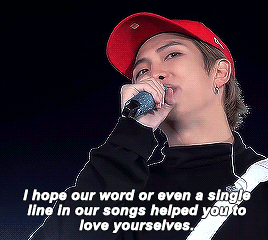



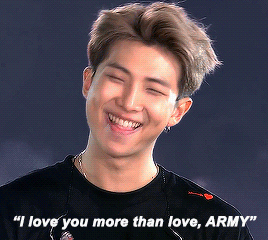
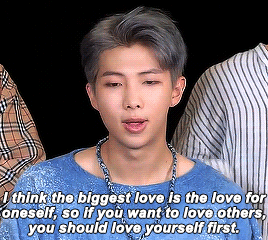


namjoon is love 💜
happy birthday joonie! thank you for constantly filling our lives with love and giving us reasons to love ourselves. I love you more than love.
7K notes
·
View notes
Text
alright kids let’s break this down one last fuckin time (and this is a breakdown of just aesthetics)-
goth: all black, often very elaborate, gothically inspired (obviously), not branded

emo: still lots of black but much more casual, skinny jeans, certain brand shirts (usually music-themed), converse/vans, jewelry, specific hairstyles, think 2000’s hot topic kids
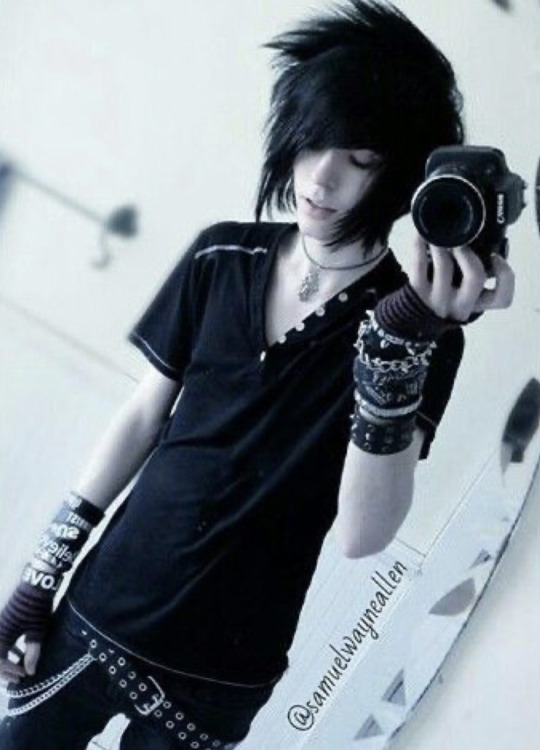
punk: lots of black again, very elaborate but in a completely different way, studs, chains, patches, piercings, leather, another set of specific hairstyles and bright hair colors, really rooted in anarchical themes
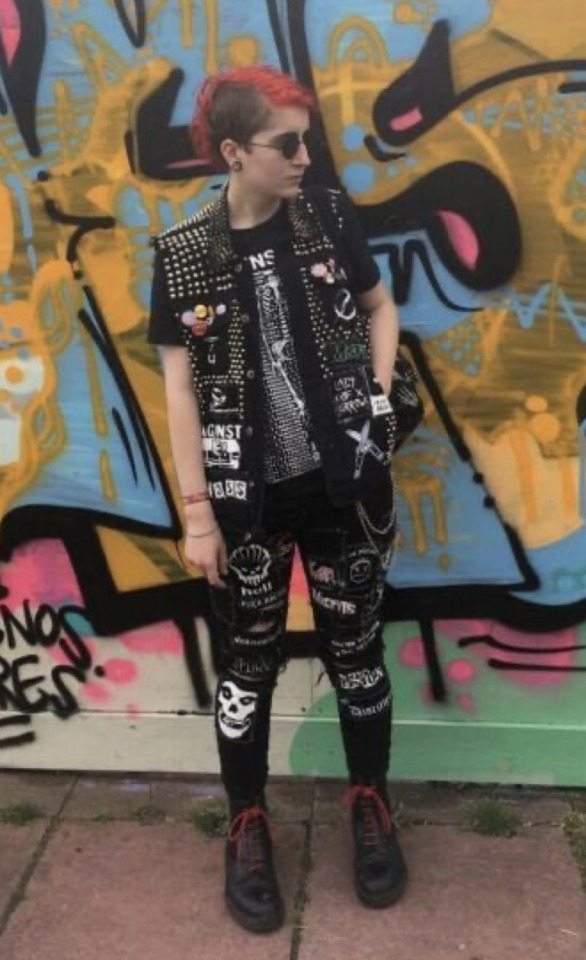
grunge: old clothes, flannels, oversized, layers, ripped jeans, distressed **if you’re buying “grunge” clothes new, you’re a fucking sham, the entire grunge aesthetic arose from garage bands too poor to afford clothes that weren’t thrifted, poorly sized, and already worn out**
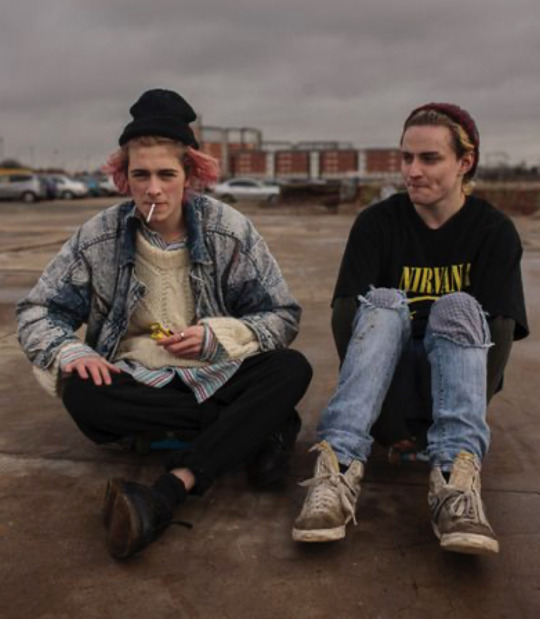
additionally, all of these include elements of gender non-conformity and prioritize self-expression as well as identification as belonging to a group
and remember!!! all of these are actual subcultures, not just aesthetics, so when you say you’re “being goth/etc” remember to specify that you mean aesthetically, because its not fair to boil an entire subgroup of people down to just their aesthetic trends
92K notes
·
View notes
Photo

instagram.com/ricekilla
twitter.com/elliotsang
coppable.com
0 notes
Photo


instagram.com/ricekilla
twitter.com/elliotsang
coppable.com
0 notes
Text
Black Rhymes Matter: A Look At the Role of Race in Rap Music
It was late 2014 when things started to get really uncomfortable. The year was kicked off by the 56th Annual Grammy Awards in which black rapper Kendrick Lamar, whose introspective, socio-political themes and lyrical intricacy called back to the oft-celebrated olden days of the genre, was predictably nominated for Best Rap Album for Good Kid, M.A.A.D. City, a concept album reflecting his days as a youth in the violent streets of Compton, California. Also nominated was Seattle-based Macklemore, whose unprecedented mainstream success in 2013 was seasoned with feel-good messaging about gay rights, sneaker culture, and middle-class whiteness.
And even though Macklemore didn’t really, like, mean to win, he did.
I
Hip hop was bred from black oppression. It roots in 1970s block parties in impoverished New York City, where many African-Americans, along with Latin and Caribbean immigrants, labored in poor inner-city neighborhoods over a hundred years after the signing of the Emancipation Proclamation and a decade after the passing of the Civil Rights Act. The music itself originated in the combination of drum breaks from funk and soul records under vocals derived from the Jamaican music practice of “toasting”, which is a rhythmic talking or chanting over a beat by a performer referred to as a “deejay”. When an artist like Lord Jamar, a controversial rapper from the 90s New York group Brand Nubian, makes a comment saying that white people are “guests in the house of hip hop”, he is calling to the reality that black people created rap music and that therefore it exists as a prized possession of a culture that has historically endured so much.
The music came into the mainstream over the course of the 1980’s, growing to prominence along with AIDS and the War on Drugs which continues to leave an inordinate amount of Americans imprisoned, and a disproportionate amount of those being African Americans. Through all of this, hip hop became an art form through which the black community expressed the issues that plagued it. One of the earliest examples of this came in “The Message”, the celebrated 1982 single by Grandmaster Flash and the Furious Five which was the catalyst for creating a crucial subgenre of rap music sometimes referred to as “conscious rap”, which is typically defined as when a rap artist focuses his/her lyrics on social and political issues. Former LA Weekly and Grantland writer Shea Serrano is the author of The Rap Year Book, a best-selling novel chronicling what he and other authors dictate the most important rap song of each year beginning at 1979. “The Message” was Serrano’s selection for 1982. “’The Message’ was pitch-perfect… (Lead rapper) Melle Mel emoted out this beautifully colored picture of an austere and bleak New York that nobody had presented before. He talked about being frustrated by all the noise. He talked about homeless people eating garbage. He talked about receiving a subpar public education. He talked about always being surrounded by either rats or roaches or junkies…” (1)
Hip hop’s relation to the struggles of poor black Americans became essential to its developing relevance. The way these ideas were related often varied. The group Public Enemy of Long Island, New York kept their messages directly sociopolitical. “Fight the Power” is the obvious example; a rousing call to the black community to resist oppressive powers, a song which was created for and featured in Spike Lee’s influential race-themed film, Do The Right Thing. A group such as N.W.A. (Niggaz Wit Attitudes), on the other hand, was not exactly recognized for the conscious and pensive nature of their lyrics, but for the intense glorification of violence and money-getting coupled with depictions of ghetto life that hit close to home for many impoverished young black men in America.
The divide between what is considered more refined and intellectual hip hop and what is considered more ignorant hip hop is not a particularly strong or sizeable one. While both differentiate in their messaging and perspectives, they both share a common thread of originating in black poverty. And while white people have never really been excluded from the culture, there have always been particulars that separate what comes off as participating and contributing to the culture and what comes off as appropriating it.
II
I started really rapping when I was 12. By then, it was 2008. The first artist that actually brewed an interest within me towards hip hop was Mike Shinoda of Linkin Park. He was Asian, so he looked like me. He found ways to infuse rap into the rock music that I was most familiar with. I found writing raps as a cool refuge, a way to express myself as one of the quietest kids around my way, a way to tap into this apparent ability to put words together in an interesting fashion, and a way to get accepted by the cooler kids who were into Eminem and Kanye. I have been immersed in the music and the culture since then. I felt more at home talking about the artists, listening to the songs, dissecting the lyrics than I did doing basically anything else. I felt an ability to be myself through it; and a powerful, cool version of myself, too.
It’s not uncommon for white (or white-ish, in my case) people to find themselves engrossed in rap culture. For this article, I managed to have an e-mail interview with the brilliant Frannie Kelley, co-host of NPR podcast Microphone check. She is a Caucasian woman. Naturally, her take on her first encounter with rap music is so much more poignant than mine:
“I remember the first time I heard Snoop’s “What’s My Name” on the radio in my dad’s Honda accord that didn’t have air conditioning. We were always listening to music really loud because the windows were down. I was in middle school in Lafayette, Calif., right on the other side of the Oakland hills, in range of KMEL, which had just become the first commercial radio station to go all urban. I had heard rap before but I hadn’t known it could sound that full, so many sounds and so free and tight at the same time. My mom asked me if I wanted to go in the drugstore with her and I was like no I’m cool please leave the keys.
“Liking the music was totally normal for me and my friends, who were a fairly diverse group of pre-teens at a tiny Catholic school who, for whatever reason, weren’t interested in using grunge to express our independence from our parents. Our middle school dances were all ‘90s hip-hop and R&B. There was an element of the boys using rap lyrics to flex, and the girls kind of understanding that rap could be a performance of masculinity in that way. …I didn’t really understand that white girls weren’t supposed to like rap until we moved to Washington, D.C. when I was in eighth grade. My first friend at school was the lone black girl in our class, and we started talking because I had the ODB album in my Walkman. The other kids knew who he was but they were a little appalled that I would actually buy the tape.”
The pale-skinned purveyors of hip hop culture have not only been on the sidelines reporting and discussing it, but have always been on the microphone creating and empowering it, as well. Frannie made sure this was pointed out to me: “I find it important to begin by saying that while hip-hop is of course an essentially black art form, that doesn’t mean there haven’t been people of other races in all of its rooms from the beginning.”
Typically when white rappers are being discussed, Eminem’s name gets tossed in the forefront. Eminem is widely recognized as one of the greatest rappers of all time, and most certainly the greatest white rapper; he was the first rap artist ever to win an Academy Award for Best Original Song, a winner of 15 Grammys, and one of the most successful artists in the history of record sales. His lyrics often tap into the older days of hip hop and its legends, like Rakim, in his relentless efforts at writing some of the most clever, intricate rhymes in rap history. But he’s far from the first white rap artist, and not even the first one to earn general respect from the black community. MC Serch of 80s rap group 3rd Bass was a Jewish guy from Far Rockaway. Another white 80s group, The Beastie Boys, drew widespread recognition both critically and commercially for albums like Paul’s Boutique and Licensed to Ill. But for as much work as those artists had done, there are still quite a few notable rap artists (who were probably strongly influenced and encouraged by the popularity of Eminem) who emerged in the past few years and opened up a very tense dialogue about race—and not for the right reasons.
Take rappers Kreayshawn and V-Nasty, two members of the group White Girl Mob which was put into the spotlight in 2012 after Kreayshawn’s single “Gucci Gucci” was released to viral Internet success. V-Nasty got some heated negative press after people discovered her casual use of the word “nigga”, which she defended by citing her being raised in Oakland with black friends who tolerated that from her. From XXL: “V-Nasty also says she’s gotten comfortable using the N-word because in her circle, which includes Black friends, too, it’s acceptable. ‘They’re used to it, they don’t give a fuck, you feel me?’ she says. ‘What, ’cause of my skin I can’t be ghetto?… In Oakland it doesn’t matter.’” (2)
Black people around the country debated whether or not the meaning of the word had changed and whether she was justified in feeling this way. The outrage that many felt regarding her choice of language foreshadowed the now-mainstream-and-still-tense debates over white people’s place in hip hop that would unfold over the next few years.
I talked with Shea Serrano via e-mail and he made sure to inform me of something that a lot of white rap fans might not quite get: this is not a new debate. “There've been white emcees for a long time. There was for sure an explosion of sorts in white people rapping after Eminem came out in 1999, so probably what you're seeing is just the result of there being more white rappers.” Frannie agreed: “I think there has been a rise in the mainstream visibility of conversations that were previously happening within smaller groups of people, often people with less access to platforms that broadcast their opinions to strangers.”
I asked Shea for leads on the history of white rapper pushback. He gave me the answer I expected. “I remember seeing pushback with Vanilla Ice. That's the first time I remember seeing it but I can't say for certain.” Without being prompted, Frannie dropped the same name: “I vividly remember news magazines and TV news mocking Vanilla Ice, talk show hosts defending him and my third grade classmates heatedly debating the merits of ‘Ice Ice Baby.’”
Vanilla Ice is quite easy to laugh at. First and foremost, he was never really considered a good rapper. In Eminem’s movie 8 Mile, lines like “Your boys like, ‘How Vanilla Ice gon diss you?’” dropped by his rapping protagonist were well received. Essentially, this line was channeling the widespread connotation that it would be shameful for a black rapper to get schooled by a white rapper, that white rappers are near-universally wack and corny, and that Vanilla Ice was the perfect embodiment of this idea. Even the non-fictional Eminem had a pretty unexciting beef with Ice, which included the former’s quip about Ice’s hit song “Ice Ice Baby” making him feel like he “didn't want to rap anymore. I was so mad, because he was making it real hard for me."
His persona was also goofy, and pretty questionable. A 1990 People article centered on Vanilla Ice at the peak of his novelty powers begins with a then 22-year-old Ice questioning his identity: “I sit back in bed and think, 'Why am I Vanilla Ice? Why did I get into rap music? Why didn't I go to college and become a lawyer?' I guess it's the way I grew up." (5)
The way he grew up, as the story goes, was rough, and included an incident with a black gang where he ended up getting stabbed in the buttocks area. There were questions as to the veracity of these claims, and how bad he really had it. His mother gave an interesting quote for this same article: “The lies were a smoke screen to protect the privacy of the family… But a lot is true. Economically, we weren't able to live in an elite part of Miami. He was raised predominantly with blacks, and he definitely was in a lot of trouble. When he was stabbed, I nearly died. But things were better for a while in high school.”
As for Vanilla Ice’s standing on how his skin color related to his street cred: “It's not about skin color… Rap is from the streets and I'm from the streets. That's why a lot of people accept me.”
III
Over those years, two female rappers have solidified themselves as not just fierce rivals, but completely unable to have a rational discussion with the other. Both of them are named after flowering shrubs—one being Iggy Azalea of Sydney, Australia, and the other being Azealia Banks of New York City. It’s kind of unfortunate that their beef is one of the seminal moments in hip hop’s discussion of race in the 2010s, being that neither of them bears a track record worthy of fronting a noble cause for anything. They both have a penchant for saying the tasteless and offensive; Iggy did so when spinning off a Kendrick Lamar line in her song “D.R.U.G.S.” in which she calls herself a “runaway slave master”, or in past tweets using the words “dyke” and “homo”. Banks launches herself into a different stratosphere when it comes to tasteless comments, like when she suggested gang rape of Sarah Palin: “Let's find the biggest burliest blackest niggas and let them run a train on [Palin]”. (2)
But perhaps it is fitting that their feud was, for a time, central to hip hop’s discussion of race. It is in a sense emblematic of the kind of dialogue that is often had in the public eye when it comes to these matters; centered on an important and interesting subject, but diluted with attention and praise-seeking as well as personal venom to the point where said subject is essentially objectified and unable to be taken with the proper seriousness.
These two talented but controversial artists had been feuding for years, but it all came under one large public eye when Banks got on Hot 97 and vented what she felt was the deep, underlying problem in Iggy’s success. From the Huffington Post’s article: “’That Iggy Azalea shit isn’t better than any fucking black girl that’s rapping today, you know?’ Banks said. ‘When they give those awards out — because the Grammys are supposed to be accolades of artistic excellence, you know what I mean? Iggy Azalea is not excellent. [...] When they give these Grammys out, all it says to white kids is: ‘Oh yeah, you’re great, you’re amazing, you can do whatever you put your mind to.’ And it says to black kids: ‘You don’t have shit. You don’t own shit, not even the shit you created for yourself,’ and it makes me upset.’” (3)
What really seems off-putting about Iggy Azalea is not just the fact that she’s a white rapper from Australia making pop music; she does it in a voice that is not really her own. While most rappers add a bit of a distortion to their voice while performing, Iggy’s is pretty over-the-top; she adopts what seems to be the accent of an Atlanta rapper. When asked about it in 2013 by Complex Magazine, her response is this: “’If you’re mad about it and you’re a black person then start a rap career and give it a go, too. I’m not taking anyone’s spot, so make yourself a mixtape. Or maybe if you’re black, start singing like a country singer and be a white person. I don’t know. Why is it such a big deal?’” (6)
“It's offensive when she does it because it's clear she's trying to just imitate the voice and tonal inflection of a stereotypical southern rapper. It's essentially blackface but for ears,” says Shea. For he and for many other hip hop heads, there is a line to be drawn with non-black rappers. You have to present yourself in a way that’s authentic to the person you are. “A non-black rap artist just has to rap in a way that is natural and reflexive to them. That's why some people like the Beastie Boys or Eminem have always been seen as cool and acceptable while people like Iggy or Post Malone are seen as leaches or parasites.”
It is not just a matter of honest self-expression. It is a matter regarding a tradition of blackface and whitewashing of blackness in American art since its inception. It is a matter regarding a tradition of art forms like jazz and blues that initiated in black struggle and became appropriated by white performers into white homes to create white money as the black pioneers were forced to capitulate to an America which would almost certainly not give them the same levels of respect and payment. And rappers like Iggy Azalea seem oblivious to it, dishing out takes about white equality and disrespect towards her whiteness, expressing outrage at terms like Beyonce’s “Becky with the good hair” (7) while showing no outrage or concern towards the social issues and systemic oppression that lead to those ideas; ideas she feels so hindered by and, in reality, benefits greatly from.
“It’s really important to talk about the choices major labels make in marketing white rappers differently from black rappers,” Frannie adds. “It’s really important to talk about who programs commercial radio and why, the tone and volume of news coverage, the lowered critical bar, the fetishization of flipping a stereotype, ticket prices, the psychology of crowds and the demographics of album buyers. I would really appreciate it if a rise in the visibility of people saying ‘Oh hell no’ meant a rise in the level of the dialogue surrounding the impact of white people’s role as consumers and commodifiers of rap. I can’t tell if that’s happening or not.”
IV
#BlackLivesMatter came and, as of June 2016, never went. Jelani Cobb’s sizable article for The New Yorker detailing the rise of the movement attributes it to Alicia Garza, who, after George Zimmerman’s acquittal in the highly publicized death of teenaged Trayvon Martin, wrote the following in a Facebook status: “I continue to be surprised at how little Black lives matter. And I will continue that. stop giving up on black life.” (4)
At the time, as a 16-year old white-ish kid, I was concerned with the divisiveness of the issue, about the idea of the mainstream media perpetrating a story to spark conflict between black and white people. But it doesn’t take too much digging and waiting to recognize a pattern. Soon followed Michael Brown in torn-up Ferguson, Eric Garner in Staten Island, Laquan McDonald in Chicago. The time and the research makes you weary, sad, and tired.
I decided to talk to my friend Trey about this. Trey is an aspiring writer who wants the world to know he should really write the next Static Shock movie. We both attended St. Joseph’s College together for a year, my first year, before Trey graduated with a Bachelor’s in English. Trey has been a mentor, a good friend, and someone to talk about Lupe Fiasco with to an extent which would probably confuse most third parties. Trey is also a tall black guy, with a pretty big frame and excellent dreadlocks. He’s not an example of someone who has undergone extreme violence or abuse due to his ethnicity, but he’s still perennially affected.
“I’ve seen Confederate flags on people’s cars and trucks around here, in the suburbs of New Jersey, as well as being called a nigger three times a day in my freshman year of high school.”
I asked Trey about whether he ever feels fear in his day-to-day life because of his ethnicity.
“Any time I’m around a cop… If I’m ever out at a bar and I’m speaking and I notice a large group of white people looking at me, I probably notice. That’s about it.”
“I don’t think you can easily separate white privilege in rap from white privilege in everything,” Frannie Kelley told me. I tried to gauge from Frannie what your average white person, who needs not get extra nervous around police officers, who has never been mocked by the language used to break the bodies of his or her ancestors, who has never felt the weight of discriminatory laws and traditional prejudices, should do to remove their guilt and find a proper place in hip hop. “White people participate in life with black people. White people should talk out loud about what they feel, and about what they see and hear other white people do, regardless of their field.”
And what do the non-black artists need to do?
“Don’t be a fucking idiot. Don’t do it for the gram. Don’t say the n word. Give credit. Pay homage. Know your history. Know yourself. If it doesn’t feel right, it’s not. If you get put on, put on as many other people as you can. Care for black people as much as you care about black culture, which at minimum means educating your peers and family about racism and sexism and homophobia every time some shit goes down, even when it’s uncomfortable and especially in white, or male, or straight rooms. And extra especially in those straight white male rooms.”
In rap’s relatively short history, it has always closely been related to social issues. Conscious rap, as mentioned in part I of this paper, has existed since the times of Melle Mel. Songs like “The Message” and “Fight The Power” and 1989’s “Self-Destruction”, a popular record about stopping violence in poor African-American neighborhoods featuring several prolific rap artists at the time like Public Enemy, Heavy D and KRS-One, were not only conscious of Black America’s issues, but they reached popularity within the rap community. This has always been a tough thing to balance. It is hard to make music that appeals to a wider audience while also touching on important social issues, especially social issues regarding an oft-neglected 13.2% of the American population. Artists tend to work on whatever end of the spectrum suits them best.
“I guess you have to find a balance with it all,” Trey tells me. “With the mainstream it always seems like there’s either party rap or people trying too hard to be conscious and there’s no balance anymore.”
But Kendrick Lamar finds ways to reach that balance. Bursting onto the scene with his 2011 LP Section.80, which was independently released through Top Dawg Entertainment, Kendrick has constantly received praise for the detail and subject matter of his music. A PopMatters review of this album gives an example of this: “Like a young Ice Cube, he's only telling us what he sees, and while he might not offer solutions as often as O'Shea did, he's certainly able to paint us vivid a picture.” His most recent full-length effort, To Pimp a Butterfly, was an incredibly well-received work which, at its release in March of 2015, became a magnum opus of the young Black Lives Matter Movement.
But in between those two records was Kendrick’s major-label debut, Good Kid, M.A.A.D. City was released in 2012 to, as you might expect, heavy critical acclaim. It featured a radio hit in “Swimming Pools” which was about alcoholism and its correlation to peer pressure. It featured an album-long narrative surrounding Kendrick’s youth in a dangerous, gang-ridden neighborhood. And it should have won a Grammy, by many accounts. But it didn’t. It lost to Macklemore and Ryan Lewis’ The Heist, an album which wasn’t exactly whitewashed pop drivel. The Heist had some songs about the dangers of sneaker culture (“Wings”) and support of the LGBT community (“Same Love”). But it was also super white. Even the songs about important social issues came off to many as featuring this white guy with a holier-than-thou attitude trying to change the dominant ideas of hip hop culture. That’s a bit of a shame, considering that Macklemore has made music about white privilege in rap music (two songs literally being called “White Privilege” divided into part I and II, part II being in response to the criticism he received after this album).
It’s worth noting that Macklemore’s work might not be all that diligent. “What I actually hate about “White Privilege II” is its distance from its subject,” Frannie Kelley tells me. “The song is about Macklemore’s intellectual and emotional separation from murder. I think he and his advisors believe that’s appropriate. I think nobody needs that shit. I think its biggest danger is that it provides a rationale for white people to stand aloof from what has happened and continues to happen to black people, who are our friends and family. I am waiting for a song, a statement of any kind, from a white person in any art form, that is devastated, ground down, years-off-your-life horrified. I think we need a white person with charisma and skill to take this shit personally. And I think half-stepping is clutter and noise that, in these urgent times, should actually be punished. No, Macklemore is preachy and corny because that’s how he got paid the first time.”
But even he, preachy and corny Macklemore, understood the significance of this moment. And he did something that rap music will never endorse nor forget; he apologized to Kendrick in a long text message for winning this award over him. And then he publicized that message, for some reason.
"You got robbed. I wanted you to win. You should have. It's weird and sucks that I robbed you.”
3. http://www.dailymail.co.uk/news/article-3531043/Twitter-sides-Azealia-Banks-Sarah-Palin-feud-Rapper-gets-account-despite-violating-rules-tweeting-former-Alaska-governor-gang-raped.html#ixzz47AdYfTNS
2. http://www.xxlmag.com/xxl-magazine/2011/11/v-nasty-defends-her-use-of-the-n-word/?trackback=tsmclip
1. Serrano, Shea. The Rap Year Book: The Most Important Rap Song From Every Year Since 1979, Discussed, Debated, and Deconstructed (Kindle Locations 638-639). Harry N. Abrams. Kindle Edition.
4. http://www.newyorker.com/magazine/2016/03/14/where-is-black-lives-matter-headed
5. (Vanilla Ice) http://www.people.com/people/archive/article/0,,20113806,00.html
6. http://www.cosmopolitan.com/entertainment/celebs/news/a41270/iggy-azalea-timeline/
7. http://www.usmagazine.com/celebrity-news/news/iggy-azalea-chimes-in-on-beyonces-becky-lyric-stereotypical-names-w204451
0 notes
Link
0 notes
Link
0 notes
